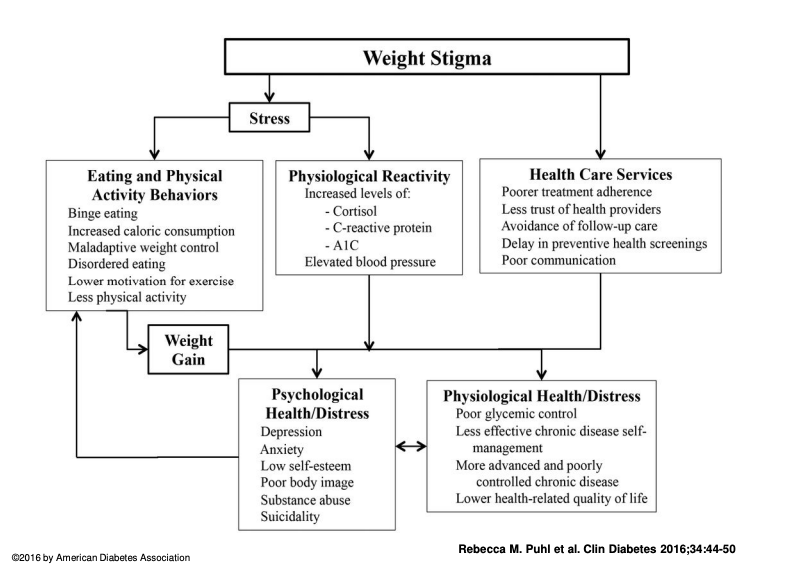Health At Every Size: What the heck does that mean? And why is it important to use in Integrative Healthcare?
In a society that often over simplifies health by associating it to a particular weight, shape or body size, the Health At Every Size (HAES) philosophy offers a refreshing perspective to comprehensive healthcare. Rooted in inclusivity and honoring diversity, HAES challenges the out-dated notions of health and advocates for a more holistic approach to wellbeing. But what the heck does that mean and why is it so important to adopt this framework in integrative healthcare? Let’s dive into what HAES entails, its core pillars, and the research supporting its effectiveness for improving wellbeing.
What is Health At Every Size (HAES)?
Health At Every Size (HAES) is a philosophy that promotes health and wellbeing without focusing on weight loss as the primary goal. It acknowledges that individuals come in diverse shapes and sizes, and health is not determined solely by one’s body weight or BMI (Body Mass Index). It recognizes that BMI is not only out-dated, but was never meant to be a marker for an individual's health (1). Instead, HAES emphasizes enhancing one’s health via adopting healthy habits that nourish a person’s body and mind, while honoring their uniqueness and values.
“HAES emphasizes enhancing one’s health via adopting healthy habits that nourish a person’s body and mind, while honoring their uniqueness and values.”
Core Pillars of HAES:
Weight Neutrality: HAES rejects the idea that weight is the most crucial determinant of health, or that certain body types should be idealized or pathologized. It encourages individuals to shift their focus from the number on the scale to sustainable behaviors that support overall wellbeing.
Health Enhancement: HAES emphasizes that consistency with balanced nutrition, regular physical activity, adequate sleep, and stress management should always take precedence to the pursuit of weight loss.
Respectful Care: HAES supports health policies that improve and equalize access to information, services, and personal practices that improve human well-being, including attention to individual physical, economic, social, spiritual, and emotional needs. It highlights research recognizing the harmful effects of stigmatizing individuals based on their size (sometimes known as anti-fat bias*) and promotes a more comprehensive approach that respects all bodies. (2)
Eating for Well-being: HAES promotes honoring individuality with nutritional needs in a way that is flexible and centers mindfulness of hunger, fullness, satiety, preferences and culturally important foods, rather than an externally enforced and overly simplistic plans that are focused on weight suppression and control.
Life-Enhancing Movement: HAES encourages people to explore exercise that they enjoy or feel empowered by, in order to sustain movement throughout the lifespan instead of movement as a way to adhere to societal standards.
How HAES Helps: Research Supports Health At Every Size for Better Health Outcomes
Many people believe that accepting body diversity is a cop-out for health providers when addressing health concerns and see it as an “excuse” for fat* people to avoid taking responsibility for their health. However, large bodies of research show the contrary; implementing the Health At Every Size philosophy in healthcare has led to sustained improved cardiovascular health, eating and exercise behaviors, quality of life, and mental health. (3) In fact, several studies showed that participants who implemented HAES had significant decreases in levels of total cholesterol, LDL (bad cholesterol), and blood pressure, while the diet control group did not. (4)
“The Health At Every Size philosophy in healthcare has led to sustained improved cardiovascular health, eating and exercise behaviors, quality of life, and mental health.”
Moreover, research reveals that while the pursuit of weight loss via calorie-deficit diets shows improved health status in the short term, these same diets backfire and have the opposite effect in the long run. The side effects of yo-yo dieting can lead to lean body mass loss, decreased cardiovascular fitness, weight rebounding to at or above the pre-diet weight, disordered eating, dysfunctional patterns and low-self esteem (5). With clear research showing that weight cycling* leads to increased morbidity and mortality risks, and BMI categories with the best life expectancy being overweight (BMI of 25-29.9) and obese level 1 (30-34.9), it leads many to question if prescribing weight loss diets as a primary intervention in medical visits for people in larger bodies is ethical at all (6,7, 8, 9).
Relative Risk of Death By BMI
International Journal of Obesity 35:838-851, 2011
Knowing this information, if we assume that someone is unhealthy solely on their body weight, shape, or size, without taking a critical look at other factors such as blood work, blood pressure, anthropometry, energy intake, diet quality, psychological health, and socioeconomic status, we are in fact not being diligent in our efforts to understand the individual needs of that person. Layer this with the data that stigmatizing anti-fat rhetoric may have detrimental effects on physical and mental health, along with leading to individuals avoiding healthcare services and weight gain, it is reasonable to assert that a weight-based approach is not only counter-intuitive, but may be in violation of ethical Standards of Care. (10)
Health At Every Size Doesn’t Mean Health at ANY Size
The Health At Every Size philosophy is often misinterpreted to mean that any person can be healthy at any weight. That is absolutely not the case. Weight, in some cases, can contribute to health problems. Again, BMI is outdated, and was never meant to measure individual health (it was meant to measure population averages!). Yet, since it's a measure many of us have come to recognize, the further BMI goes below 18 or above 35, the more likely it is that it could be negatively impacting wellbeing.(11) While it is important to honor that health can look like a much larger array of sizes and shapes than perpetuated by modern influences like media, it is still important to find a provider that looks at the whole picture of one’s health. That way, if there is evidence that weight is higher OR LOWER (why don’t we talk about that more?!) than where the body truly wishes to be, the care team can take a deeper dive at the root cause of what is causing the weight imbalance. Then, they can take a holistic approach to building balance, instead of slapping an arbitrary statement like “lose weight with diet and exercise” on someone's discharge paperwork, leaving the patient to fend for themselves in a culture swimming with confusing-to-downright harmful ways to accomplish this.
Ways to Get Started with the HAES Approach
If this article is your first exposure to an explanation of HAES, and your mind is feeling blown or your world has seemingly been flipped upside down– don’t panic! That is a totally normal response to having your eyes opened to a better, brighter way of looking at healthcare that challenges a culture laden with discriminatory and outdated practices accepted as the status quo. I will never forget when I first discovered the deleterious and short-lived outcomes of weight loss diets, in my undergraduate studies. As a previous avid believer in diets, I was shocked when I reviewed all meta analyses of low calorie diets and discovered there were no long term positive effects, and some possibly harmful ones.
Whether you are a healthcare professional who wishes to implement HAES and/or wanting to get started practicing it for yourself, there are clear ways to get started!
Get away from the implicit model of weight and health. Examine your own biases. Reject that your or another’s weight, shape, health or choices equate to worthiness as a human. Start seeing all people with all types of bodies as worthy of comprehensive and individualized healthcare that is respectful.
Ask questions that center a more holistic model of care. For instance:
What besides weight loss do you think would make the biggest difference in your health or wellbeing right now?
How would you like your body to feel (think inside-out)? What actions/interventions may lead to it feeling this way?
What would treatment or evaluation be for a person in a smaller body? Then, do not delay that evaluation or treatment for a trial of weight loss.
What else could be causing the symptoms? Consider all factors, not just behaviors, including socioeconomic status, access to comprehensive medical care, environment, and genetics.
3. Remember that weight is a characteristic, not a behavior. While behaviors may impact weight, assuming a person’s behaviors must look a certain way because of their body type is a biased lens of observation. Listen to what a person is telling you about their health concerns and behaviors, and believe them. A person’s healthy weight is, by definition, the weight they are at when they are sustainably managing their total wellbeing within their current situation.
HAES is the Future of Integrative Healthcare
The current model of weight centered healthcare is failing us. It is reducing people, their individuality and complex needs, down to a number on the scale. This approach is creating a culture which centers some humans as better or worse than others because of their body, which is dehumanizing and perpetuating chronic stress. Those outside of the respected body types are more likely to avoid medical care due to being repeatedly shamed or having their concerns dismissed.
HAES offers a solution to mend a fracture in our medical system. It can repair the relationship between healthcare providers and their patients, and more importantly, it can mend the relationship people have with their own bodies while empowering them to take better care of their wellbeing. Using the HAES model of care, we can start looking at the bigger picture when it comes to health in order to provide a deeply nourishing approach to healing; One that pours into a person’s needs in ways that helps them feel more complete, instead of depriving them through unsustainable weight-loss diets.
Ready to get started optimizing your nutrition with a Health At Every Size approach? Reach out to me via the Contact Me page!
This website is used for educational purposes only and should not be used as a replacement for medical advice. Please reach out to your healthcare team for questions pertaining to your individual health needs.
* Anti-Fat Bias is the implicit and explicit bias of overweight individuals that is rooted in a sense of blame and presumed moral failing.
* “Fat” is always used as a neutral to positive descriptor on my site. It is important to destigmatize the word fat and treat all bodies as worthy of care and respect, regardless of weight, shape or size!
* Weight-cycling is when an individuals weight drops and increases many times throughout the lifecycle as a result of chronic weight-loss diet attempts.








